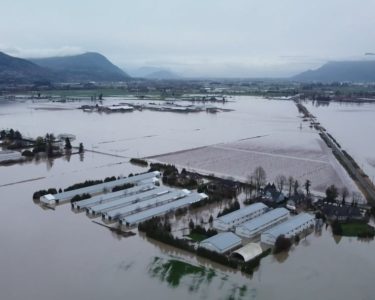Canada will reduce the number of new permanent residents to the country by 21 per cent by next year, Prime Minister Justin Trudeau and Immigration Minister Marc Miller announced on Thursday.
It’s part of a major series of changes to immigration targets that Trudeau says aims to freeze population growth.
“We’re announcing that we will reduce the number of immigrants we bring in over the next three years, which will result in a pause in the population growth over the next two years,” Trudeau told reporters Thursday.
“We didn’t get the balance quite right.”
As reported by Global News on Wednesday, the federal government is reversing course on a plan to hold its immigration targets steady for 2026. According to the 2025–2027 Immigration Levels Plan, Canada will reduce the number of new permanent residents from 500,000 to 395,000 in 2025.
Next year, 40 per cent of all new permanent residents will come from those temporary residents who are already here, Miller said while making the announcement.
Get the day’s top stories from BC and surrounding communities, delivered to your inbox once a day.
The federal government said this number is expected to fall further to 380,000 by 2026 and 365,000 by 2027.
Trudeau said that while the realities of the pandemic meant Canada needed more workers, the situation in the labour market had changed.
According to the plans laid out last year, the federal government said it would maintain previously-set targets of welcoming 485,000 new permanent residents in 2024 and 500,000 new permanent residents for 2025. According to last year’s plan, the number would stay at 500,000 in 2026 and “stabilize.”
Thursday’s plan also lays out levels of temporary residents, with the aim of reducing temporary resident volumes to less than five per cent of the general population. Canada plans to welcome 445,901 temporary residents by 2025, which will be reduced to 445,662 in 2026.
In 2026, however, the number of temporary residents will see a “modest increase” of 17,439 to 463,101.
Miller added that Canada had also seen a 43 per cent reduction in study permits being issued this year.
He said the reduced immigration numbers could reduce Canada’s housing need by as much as 670,000 units by the end of 2027.
“That means that we will not have to build an additional 670,000 housing units by that time,” he said.
Miller said that the focus of the permanent resident program will be on “those who are already here”.
“We are an open country, but not everyone can come to this country,” he said.
“While it’s clear our economy needs newcomers, we see the pressures facing our country, and we must adapt our policies accordingly,” said Miller.
He added, “These changes will make immigration work for our country so that everyone has access to the quality jobs, homes and supports they need to thrive. We have listened to Canadians, and we will continue to protect the integrity of our system and grow our population responsibly.”
This comes as the latest in a series of rollbacks of immigration levels. In March, the federal government set targets for temporary residents for the first time.
This is being done, Miller had said, to ensure “sustainable” growth in the number of temporary residents coming into Canada.
Miller said as of 2023, Canada was home to 2.5 million temporary residents, who make up 6.2 per cent of Canada’s entire population. Over the next three years, the government plans to bring that down to five per cent.
Migrant rights groups have warned that cutting back on permanent resident levels will leave the most vulnerable migrant workers with fewer pathways to residency.
“We are witnessing one of the most egregious rollbacks of migrant rights in Canadian history,” said Syed Hussan, spokesperson for the Migrant Rights Network.
“Cutting permanent resident numbers is a direct assault on migrants who will be forced to remain temporary or become undocumented, pushed further into exploitative jobs.”
Source & photo: Global News





